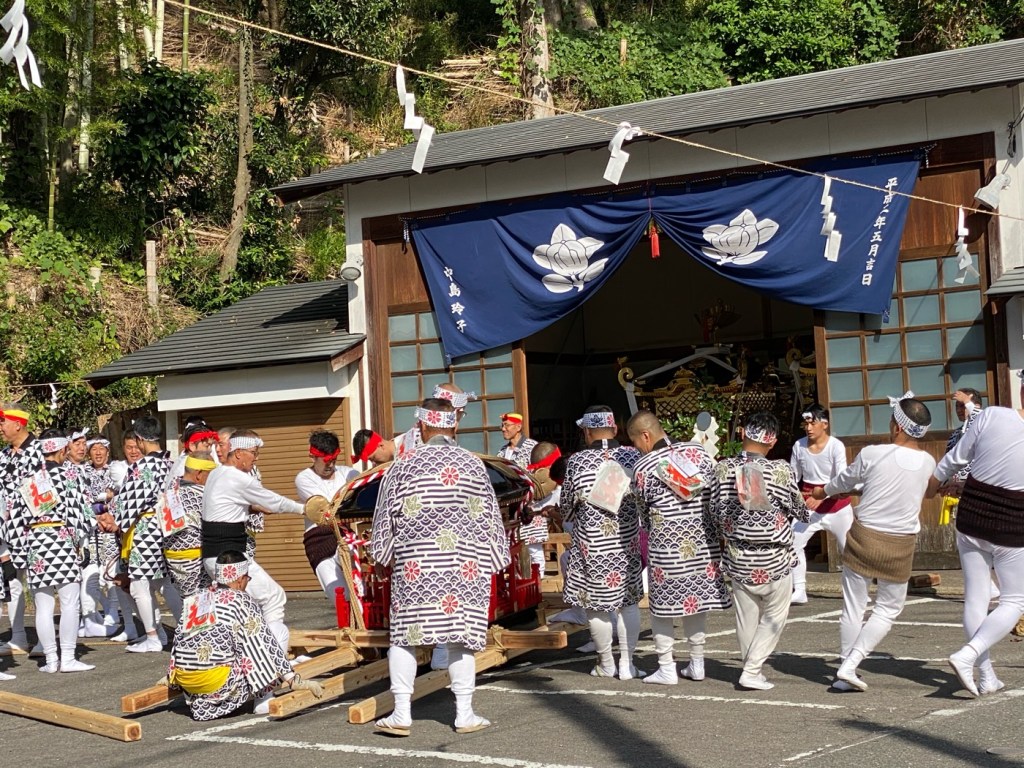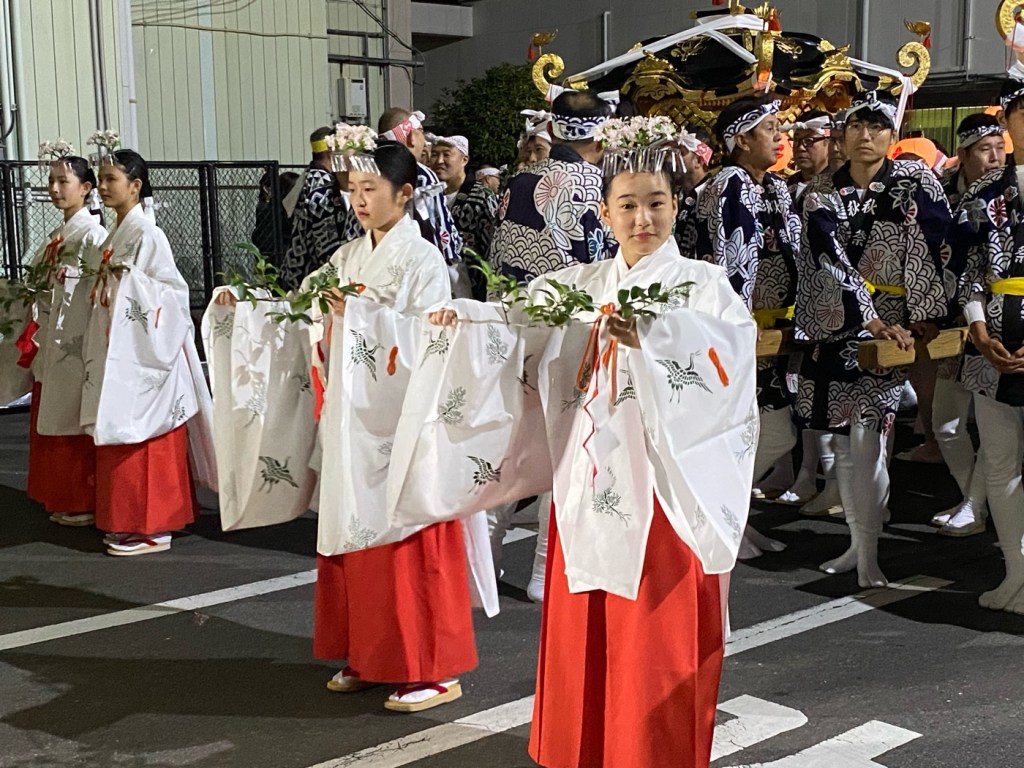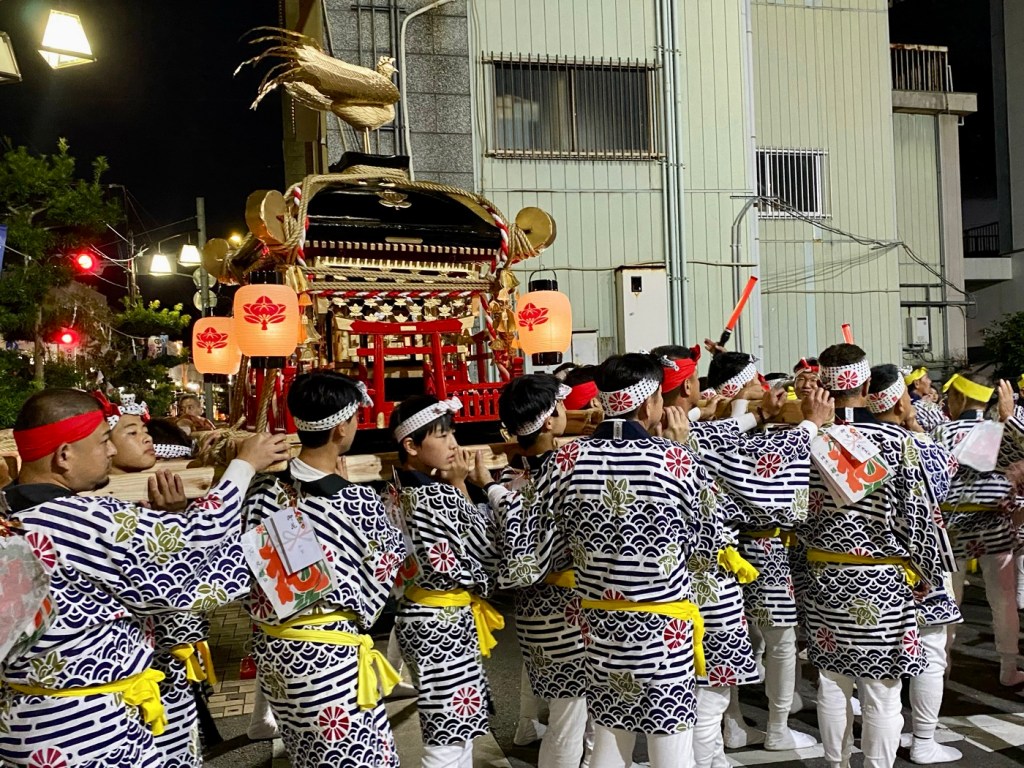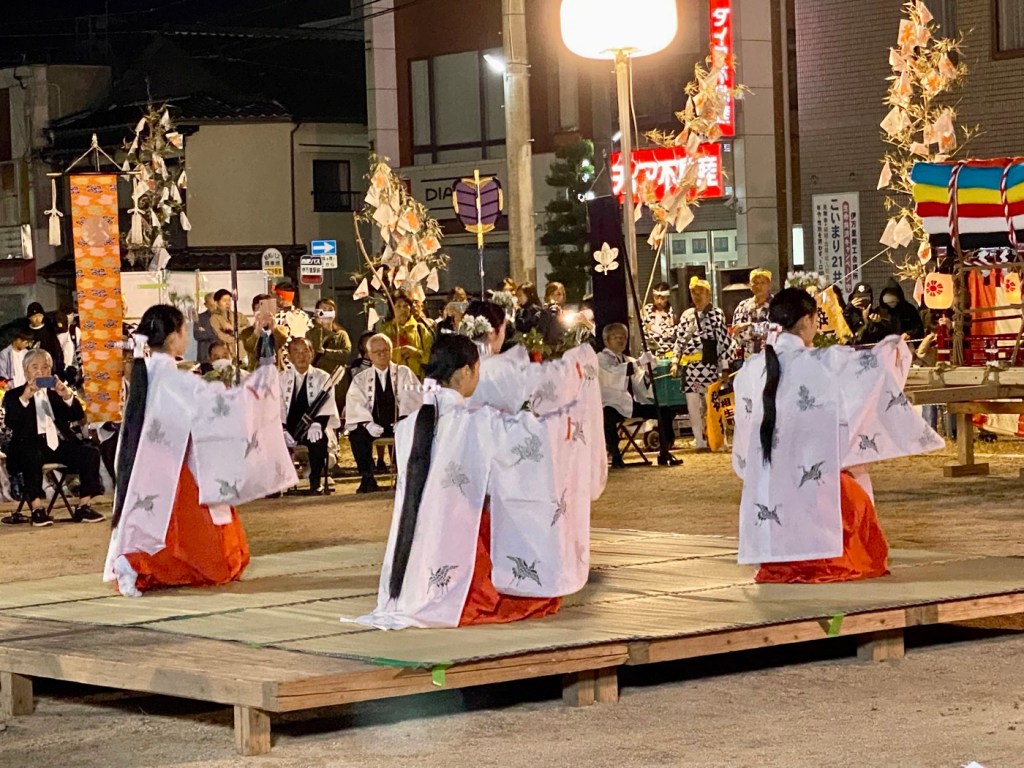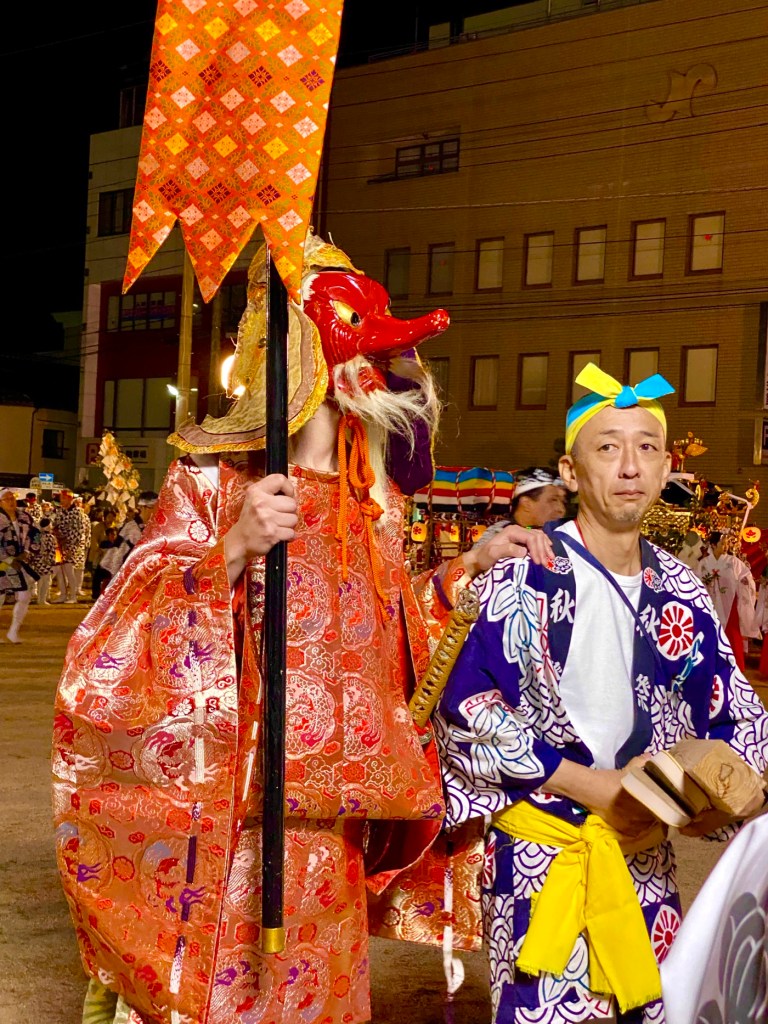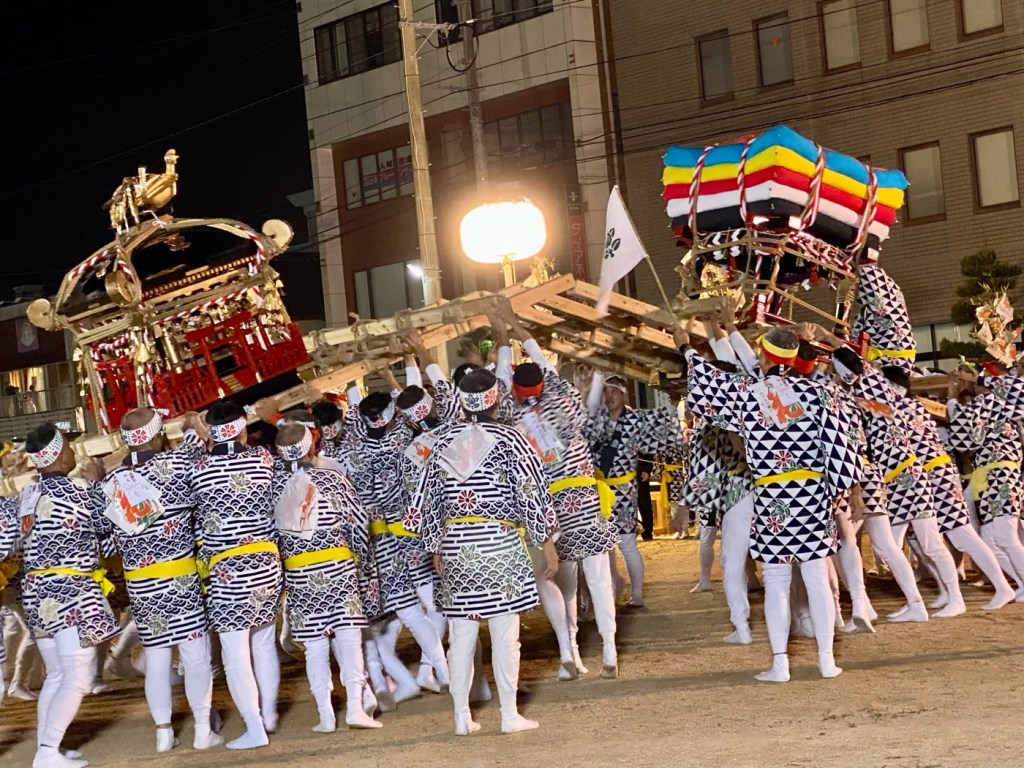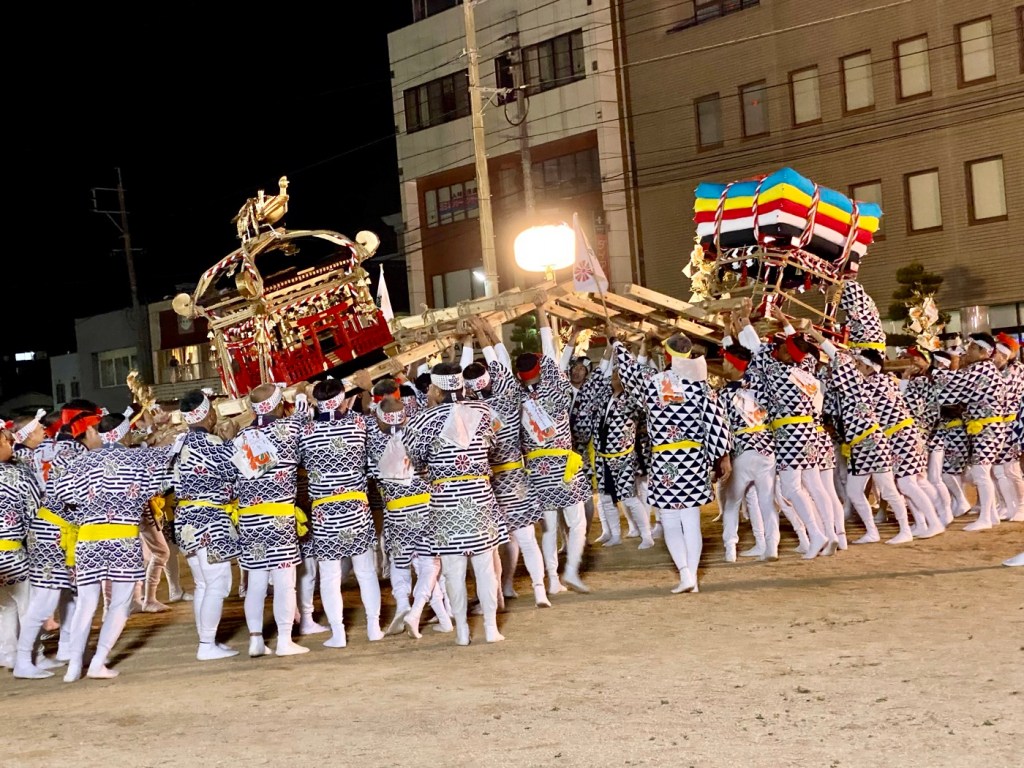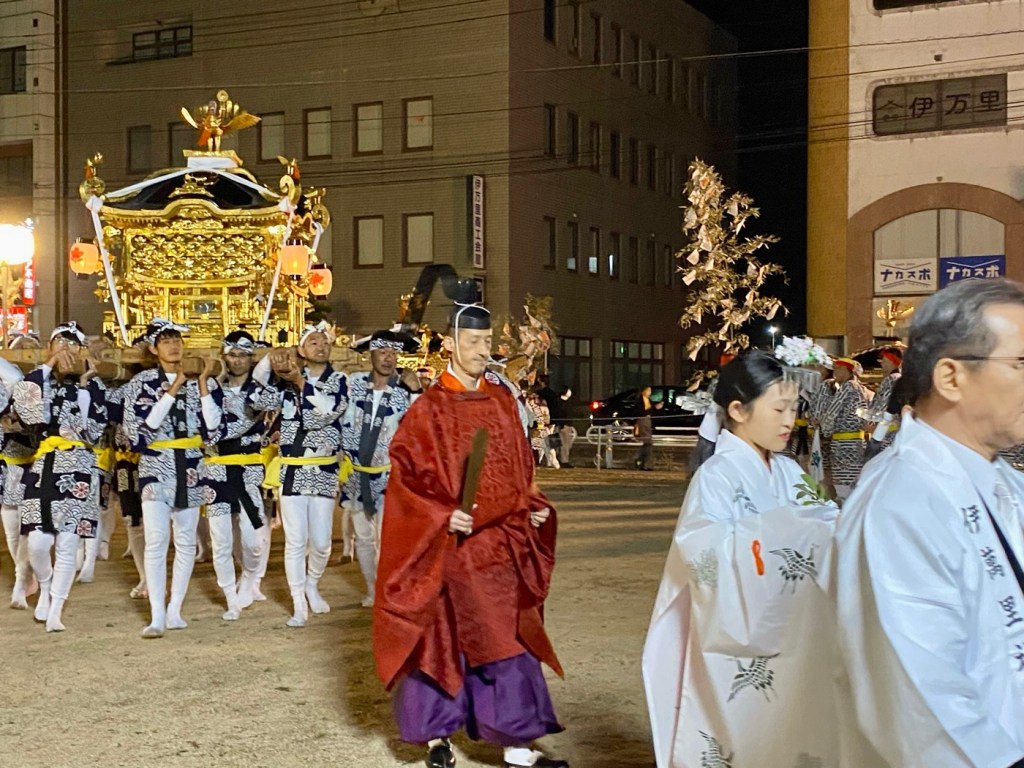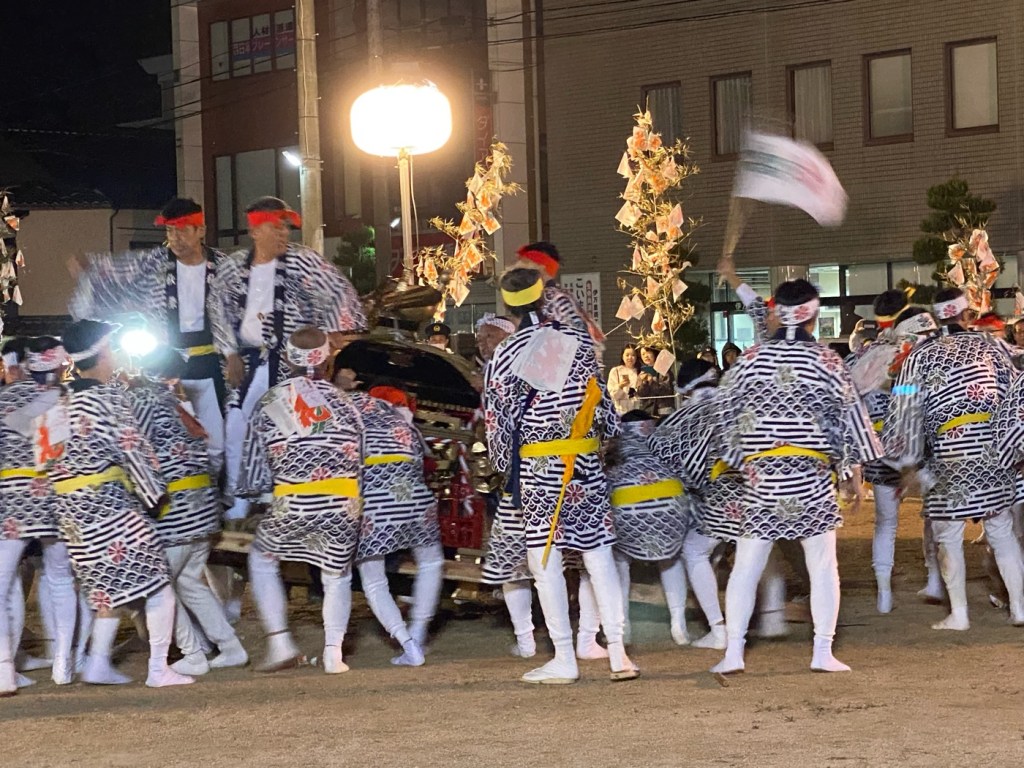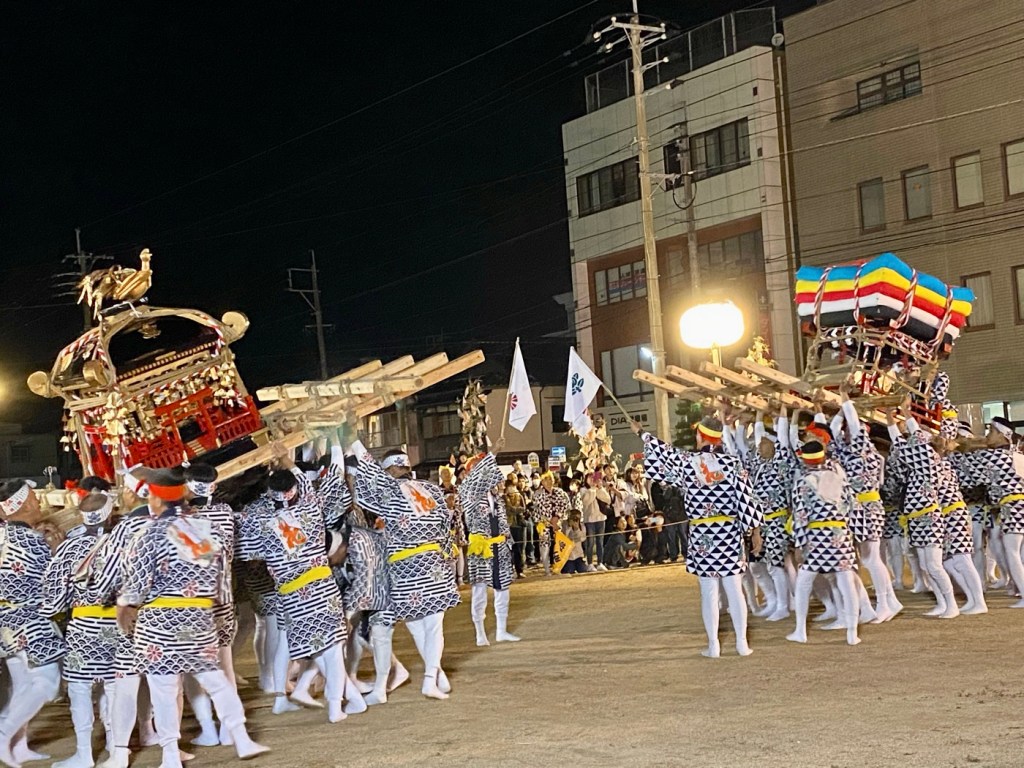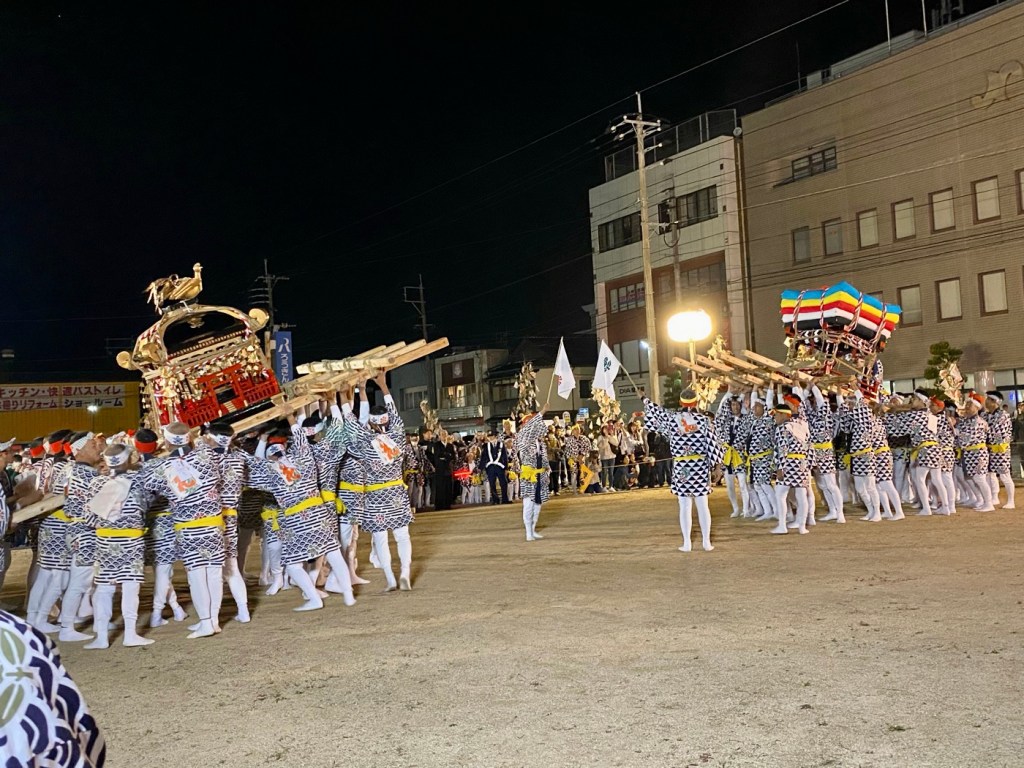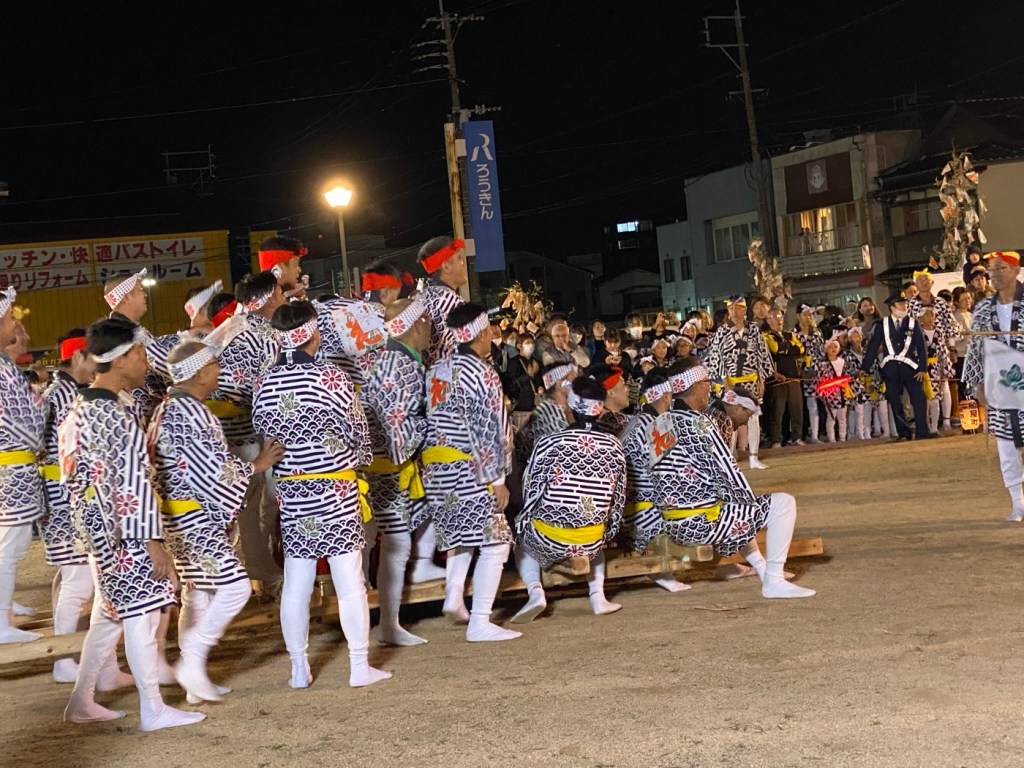The Ton-Ten-Ton Festival In Imari, The Kyushu 108 Temple Pilgrimage, Japan
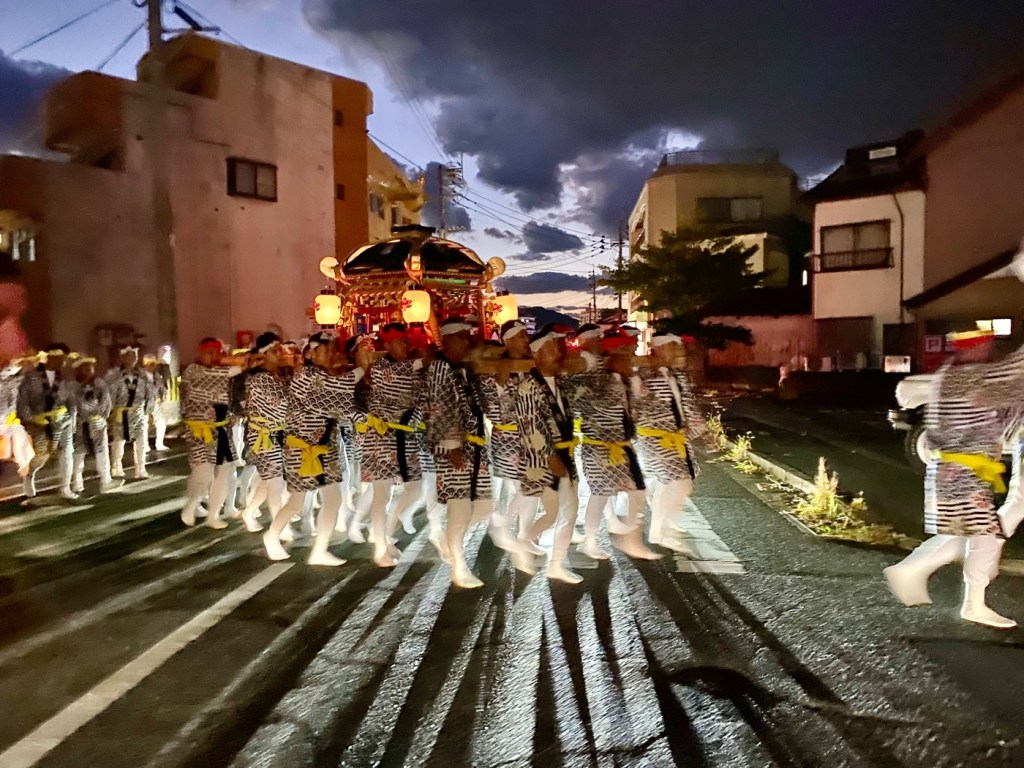
The Ton-Ten-Ton Festival In Imari, The Kyushu 108 Temple Pilgrimage, Japan
The Imari Ton-Ten-Ton Festival is a fighting festival held every year in the city of Imari, Saga Prefecture.
Beginning at the Imari Shrine, the festival is well known as one of the only three great fighting festivals of Japan.
The festival has been held since the year 1829.
We did not know that a festival was happening in Imari, nor did we coordinate our arrival to see the festival.
When we walked through the city, we saw that the streets were decorated for a festival, and that posters announcing the festival were hanging in every store window.
At the Imari shrine, we met a man who told us that he had made the golden bird that we saw placed on top of the portable shrines.
He said that he carved the body of the bird from wood and that the wings were made of copper.
He had a very pleasant demeanor and a straight back, carrying himself with the gait of a wise philosopher mixed with that of an artistic, capable man.
The Imari Ton-Ten-Ton Festival is a fighting festival.
The name Ton-Ten-Ton was given to the festival because, during battle, the clicking of the shrines with the sound of the drums sounds like Ton, Ten, Ton.
The portable shrines that are used for fighting are first carried through the streets by dozens of men dressed in their team’s uniforms.
The uniforms look almost identical with identical colors at first glance, but if you look closely, you can see that each team’s uniforms had different patterns.
One team had a checkered triangle pattern and the other had waves.
The floats themselves were also different.
One float was a small shrine, while the other was composed of colorful layers of what looked like large futon cushions, all tied together with one long rope.
The friendly man explained the meaning of the different colors of the float:
Blue represents the sky.
Yellow represents the wind.
Red represents fire.
White represents water.
Black represents the earth or soil.
As the men tied the long piece of rope around the portable shrines, they groaned and chanted.
The Imari Tontenton take place over a few days.
It includes many ceremonies to enshrine the gods in the floats and parade them through town.
The floats containing the Spirit of the gods are not the ones that are used for the battles.
These regal floats are just paraded around.
The festival is also known as Imari Kunchi, and has continued for over 200 years.
The battles are called “Gassen” and are held in multiple locations throughout the neighbourhood during the festival dates.
On the day we were in Imari, the battle took place at night after dark.
The Shinto priests wore amazing costumes with elaborate hats.
After the ceremonies were completed, the sound of the drum signaled the beginning of the battle.
The men from each team yelled at the other team, trying to incite them to fight, and, carrying the floats, they aligned them against each other and pushed, until one of the floats fell down.
The floats used in battle are called the Ara-mikoshi and the Danjiri floats. Their size and wooden structures make it clear that they are quite heavy.
On the last day of the festival, the floats will be slammed against each other and eventually fall into the Imari river.
The float that makes it back onto the riverbank first is declared the winner.
As the name “Kenka-Matsuri” (fighting festival) suggests, it is an aggressive festival that has caused many injuries every year.
There was a teenager who died in 2006, and teenagers under the age of 16 were then banned from participating in the battles.
They can participate in the parade and the music and ceremonies, but not in the battle scenes.
This year, for the first time in years, teenagers were allowed to participate, on the condition that they attend prior training, but nobody signed up for the training, or perhaps their mothers did not sign the release forms.
I was delighted to see that nobody got hurt the night we saw the battle, although I did mention to Jules that it was amazing that nobody was injured and that in our culture, multiple people would have been caught under the falling, heavy floats.
(And subsequently, there would have been many lawsuits against the city and finally the festival would be discontinued.
It would have never lasted for 200 years).
In the downtown areas, the “Imari Autumn Festival” is also held at the same time.
The festivity includes a children’s “Wasshoi Parade” and the “Imari So-odori” dance, as well as performances of Imari Taiko drumming and other traditional arts.
Many food vendors take over the downtown of Imari for the three festival days.
The highlight of the festival, is the Kawaotoshi Gassen (the river throw-in match) held on the final day.
After being slammed together, the Mikoshi and the Danjiri floats are thrown into the river while they are still in contact, and then are carried back onto the riverbank.
The float that makes it back onto the riverbank first wins, so you cannot tell who wins the battle until the very end of the festival.
Unfortunately we will not see the final battle, but we felt grateful to see a battle while we were here.
The deity of Kokitsu Shrine is in charge of promoting a good harvest.
The deity of Totoshima Shrine is in charge of promoting good fishing at sea.
Thus the prospects of the upcoming year are predicted according to the Gassen battle winner.
A good harvest is predicted if the Ara-Mikoshi wins, and a good catch is predicted if the Danjiri comes back first.
You can see the two YouTube videos of the battle that I uploaded here:
https://youtu.be/v_Er7CxY9BE?feature=shared
And another video:
https://youtu.be/MBTF9bfllRs?feature=shared
With gratitude and love,
Tali

